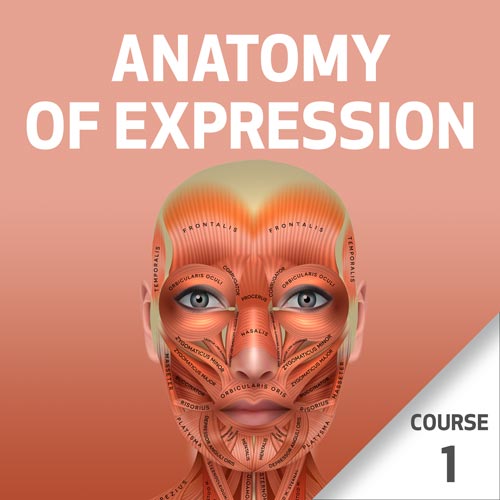How Our Emotional Expression Effects Our Face and Our Health; a Chinese Medicine Perspective
According to Chinese Medicine, one of the most common causes of disease is repressed emotions. Emotional health is an integral part of Chinese Medicine. The seven emotions associated with disease are: anger, joy, worry, pensiveness, grief, fear and fright. As stated in an ancient text, the Su Wen, Chapter 8, our internal organs are portrayed in terms of their mental, emotional and spiritual function. When emotions are prolonged, intense or repressed, they can inhibit the normal flow of Qi to our organs. Since our primary method of expressing our emotions is our face, it is essential to ensure the free flow of emotions to and from the face. Hence, facial acupuncture can play an important role in promoting not only skin health but physical health as well.
There is a feedback system between the face and our organs that allows for communication between them. This free flow of resources is intrinsic to the appearance of our face and to the underlying health of the associated organ systems. Our ability to connect with and express these emotions requires proper functioning of the organs and a smooth flow of Qi through the channels. Numerous studies have demonstrated the feedback system between our facial expressions and emotions. Studies performed by Paul Ekman have shown that if a person merely arranges his face into a certain expression, he will feel the corresponding emotion. In other words, emotions work from the outside in as well as the inside out. i.e. happiness may be as simple as putting on a smile. Conversely, an individual who cannot or does not express emotions through their facial expressions will not feel the emotion as fully. In an experiment involving the use of Botox to paralyze facial muscles involved in frowning, Havas, Glenberg, Gutowski, Lucarelli, and Davidson discovered lessened depressive symptoms in patients after paralysis of their frowning muscles. A study published in the Annals of Clinical and Translation Neurology suggests that facial feedback modulates the neural processing of emotional content. Habitual patterns of expression get lodged in the face, and repressed or excessive emotions can affect our organs. It is a two-way system with feedback from the face to our organs and our organs to our face.
There are over 60 acupuncture points on the face. Any impediment to the channels translates to diminished function. If the energy in our face is blocked and we do not or cannot express emotion with our face, we will not feel it as fully. For example, the actual expression of joy (smiling) can nourish the heart. According to the Su Wen “in order to make all acupuncture thorough and effective one must first cure the spirit”. The radiance of the skin and eyes is intrinsically connected to the spirit. Facial acupuncture involves the practitioner being present in the room with the patient for extended periods of time (it can take 30 minutes to insert all the needles), it provides a unique opportunity to learn more about a patient’s spiritual and emotional well-being. This can help to facilitate the healthy expression of emotion. Below is an example of how this all works.
The Feedback Loop; How the emotions can affect the associated organs and out of balance organs affect the face according to Chinese Medicine Theory:
Excessive or Lack of Joy Injures the Heart:
- Emotion out of balance-restlessness, insomnia, lack of enthusiasm
- Weakened heart function can lead to facial swelling and puffiness
- Heart Blood deficiency can lead to wrinkles due to dryness
- Heart fire can cause facial redness, blemishes
- Disturbed Shen can lead to poor sleep, dark eye circles and puffiness
- Excessive smiling can cause crow’s feet & deep nasolabial folds
Grief Injures the Lungs:
- Emotion out of balance-excessive sadness, detachment
- The lungs rule the Qi of the entire body
- The lungs also control the skin
- Impairment of lung function can lead to dryness and wrinkles
- Excessive sweating due to poor lung function can cause acne
- Frowning can cause marionette lines (from corner of mouth to jaw)
Anger Injures the Liver:
- Emotion out of balance-frustration, moodiness, explosive anger, irritability
- The Liver controls the Blood and the flow of Qi to all the organ systems
- Stagnation of liver Qi often leads dark spots
- Liver Blood deficiency can lead to dry skin
- A frequent expression of anger can cause vertical lines between the eyebrows
Pensiveness/Worry Injures the Spleen:
- Emotion out of balance-ruminating, excessive overthinking
- The face depends on the spleens function of transformation of food into Qi and Blood
- When spleen Qi is deficient, there is a loss of skin tone, sagging and laxity
- If the spleens ability to control transportation of fluids is diminished, the face will look puffy and there can be bags under the eyes.
- Pensiveness can cause lines around the lips and at the bridge of the nose
Fear/Fright Injures the Kidneys:
- Emotion out of balance-fearful, isolated, no will (zhu)
- The kidneys regulate the fluid balance and store the essence
- Deficient kidney yin can cause dark eye circles
- If kidney yang is low, there can be puffiness around the eyes
- When Kidney essence is insufficient, aging is accelerated
- Fear can cause lateral forehead lines, lines on cheeks
At the core of Facial Acupuncture is the foundation of treating the whole person. Doing so allows the health of the body to reflect on the skin and allowing for full expression of balanced emotional health. It is impossible to separate our emotions, our expression of them, and our health.
Other Courses By This Teacher
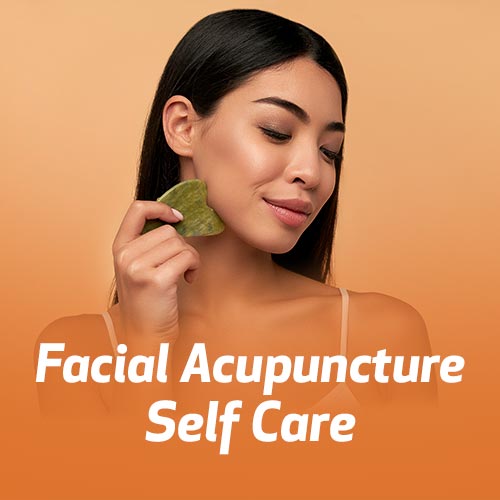

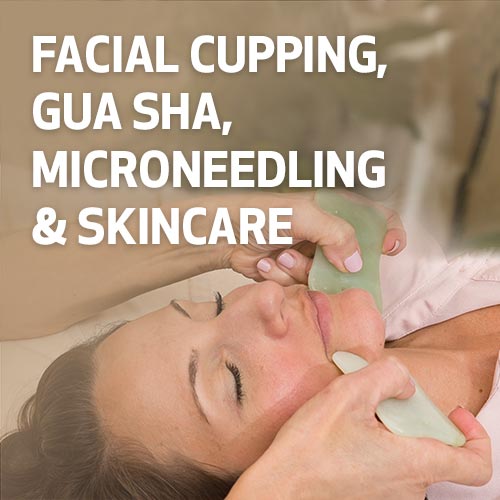

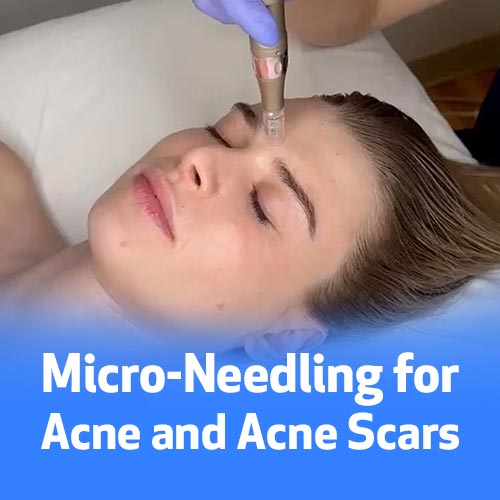

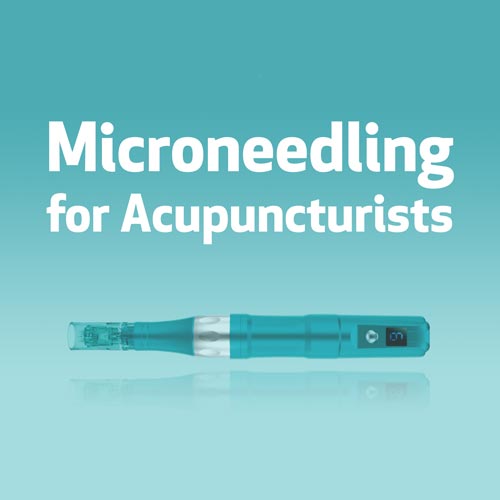



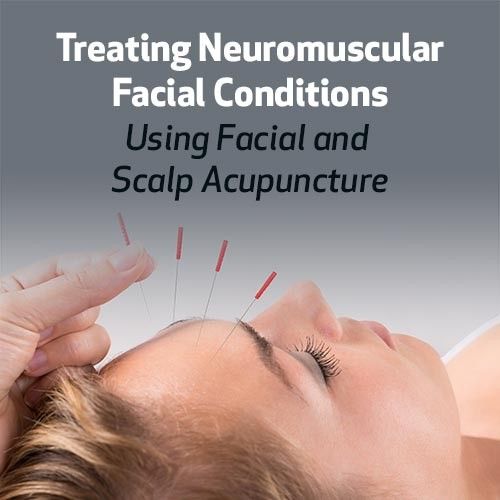

Facial Acupuncture Self Care
Self-care Facial Acupuncture, Cupping, Gua Sha & microneedling for acupuncturists
with Michelle Gellis
See In StoreOverview
This course provides an in-depth tutorial on facial acupuncture, facial cupping, facial Gua Sha and micro needling that acupuncturists can implement in their own self-care. Diagnosis, contraindications, and protocols are the main focus of the class with additional skincare and lifestyle tips. Michelle Gellis, Acupuncture physician utilizes her 20 years of clinical and personal experience to guide the practitioner through treatment planning, execution and aftercare.
Learning Objectives
- Understand protocols for facial cupping self-care
- Understand protocols for facial gua sha self-care
- Understand protocols for facial acupuncture self-care
- Understand protocols for microneedling
Your Teacher

Michelle Gellis
Michelle Gellis is a Licensed and Board Certified Acupuncture Physician. She has been a Faculty Member and Clinic Supervisor at the Maryland University of Integrative Health since 2004. Ms Gellis holds the distinction of being one of the very few acupuncturists in the US certified to teach Facial Acupuncture certification classes on an international level to other acupuncturists.
Categories
Tags
Overview
Facial Rejuvenation, Cupping, Gua Sha and Microneedling. Taught by Michelle Gellis AP MAc DiplAc Instructor, MD University of Integrative Health. Specifically designed for acupuncturists, this webinar covers Facial Cupping, Facial Gua Sha, Skin Care & Microneedle Skills.
Learn protocols to enhance your facial rejuvenation acupuncture results. Michelle covers protocols for facial cupping therapy for TMJ, Bell’s Palsy, Stroke and other neuromuscular facial conditions. Video presentations enhance the learning experience. There is also a Skin Care Lecture including information on aging and nutrition.
The protocols taught in this class will be immediately applicable in your practice.
Learning Objectives
- Learn basic skincare principles.
- Learn about microneedling.
- Learn facial cupping theory.
- Learn facial gua sha theory.
Your Teacher

Michelle Gellis
Michelle Gellis is a Licensed and Board Certified Acupuncture Physician. She has been a Faculty Member and Clinic Supervisor at the Maryland University of Integrative Health since 2004. Ms Gellis holds the distinction of being one of the very few acupuncturists in the US certified to teach Facial Acupuncture certification classes on an international level to other acupuncturists.
Categories
Tags
Overview
Discover how to safely and effectively use Micro-Needling to treat acne and acne scars in this detailed and engaging course designed specifically for acupuncturists. This class provides a deep dive into the science and application of micro-needling, focusing on its benefits for improving skin texture, reducing acne scars, and supporting overall skin health.
You’ll learn about the anatomy and physiology of the skin, how Micro-Needling stimulates collagen production, and the role of Traditional Chinese Medicine in enhancing outcomes. Through step-by-step instruction, this course covers essential safety protocols, contraindications, needle depth guidelines, tailored for treating acne and scarring.
Whether you’re new to Micro-Needling or looking to refine your skills, this class provides the tools and knowledge you need to integrate this highly effective treatment into your practice. Equip yourself to meet patient demand and deliver transformative results while maintaining the highest standards of care. Earn CEUs and expand your expertise with this dynamic and practical course.
Learning Objectives
- Understand the anatomy and physiology of the skin and the mechanisms by which Micro-Needling stimulates collagen production and improves skin texture.
- Integrate Micro-Needling with Traditional Chinese Medicine principles to enhance patient outcomes holistically.
- Be able to identify contraindications, implement safety protocols, and troubleshoot common challenges in Micro-Needling treatments.
- Learn how to safely and effectively perform Micro-Needling treatments for acne and acne scars, including proper needle depth and protocols.
Your Teacher

Michelle Gellis
Michelle Gellis is a Licensed and Board Certified Acupuncture Physician. She has been a Faculty Member and Clinic Supervisor at the Maryland University of Integrative Health since 2004. Ms Gellis holds the distinction of being one of the very few acupuncturists in the US certified to teach Facial Acupuncture certification classes on an international level to other acupuncturists.
Categories
Tags
Overview
This course is designed to train Acupuncturists in the proper use of a microneedle pen. Students will be taught the theory and protocols for microneedling and introduced to the equipment, and products used to best support the procedure.
Learning Objectives
- Learn which products are most effective for treating the face
- Learn precautions and contraindications to microneedling
- Learn how to choose a device
- Learn how to use a microneedling device
Your Teacher

Michelle Gellis
Michelle Gellis is a Licensed and Board Certified Acupuncture Physician. She has been a Faculty Member and Clinic Supervisor at the Maryland University of Integrative Health since 2004. Ms Gellis holds the distinction of being one of the very few acupuncturists in the US certified to teach Facial Acupuncture certification classes on an international level to other acupuncturists.
Categories
Tags
Overview
The purpose of this course is to familiarize practitioners with protocols for needling the face and neck safely in order to reduce trauma to the skin and underlying structures. Anatomy, point location contraindications and precautions are reviewed. This course will
* familiarize practitioners with protocols for needling the face and neck safely
* review Facial Anatomy
* introduce tools used for safely needling the face
* review contraindications and precautions
Learning Objectives
- Review facial anatomy
- Introduce tools used for safely needling the face
- Familiarize practitioners potential concerns when needling the face and neck
- Review contraindications and precautions
Your Teacher

Michelle Gellis
Michelle Gellis is a Licensed and Board Certified Acupuncture Physician. She has been a Faculty Member and Clinic Supervisor at the Maryland University of Integrative Health since 2004. Ms Gellis holds the distinction of being one of the very few acupuncturists in the US certified to teach Facial Acupuncture certification classes on an international level to other acupuncturists.
Categories
Tags
Treating Neuromuscular Facial Conditions
Using Facial and Scalp Acupuncture
with Michelle Gellis
See In StoreOverview
This course provides needling protocols such as intramuscular needling of the face, scalp acupuncture, facial cupping, auricular points, and motor points.
The knowledge gained in this acupuncture course will be used in the second part of the webinar which covers how to treat various diseases and disorders which affect the proper functioning of facial muscles and nerve such as Bell's Palsy, Ptosis, Shingles, TMJ, Stroke, Trigeminal Neuralgia, MS and others. It also provides assessment tools and needling protocols to treat various diseases and disorders which affect the proper functioning of facial muscles and nerves such as: Bell's Palsy, Ptosis, Shingles, TMJ, Stroke, Trigeminal Neuralgia, MS and others.
The second half focuses on diagnosis and treatment. The student will learn to Identify different TCM patterns, which affect the facial muscles and nerves.
Learn which modality is best suited to treat different conditions affecting the face. Learn how to effectively plan treatments for various conditions affecting the face.
Learning Objectives
- Learn how to assess and diagnose neuromuscular facial conditions.
- Be able to identify which modality is best suited to treat different conditions affecting the face, including screening for contraindications.
- Learn facial motor points
- Learn facial cupping
- Perform treatment planning for neuromuscular facial conditions.
- Learn Intramuscular needling of the face
- Learn scalp acupuncture
Your Teacher

Michelle Gellis
Michelle Gellis is a Licensed and Board Certified Acupuncture Physician. She has been a Faculty Member and Clinic Supervisor at the Maryland University of Integrative Health since 2004. Ms Gellis holds the distinction of being one of the very few acupuncturists in the US certified to teach Facial Acupuncture certification classes on an international level to other acupuncturists.
